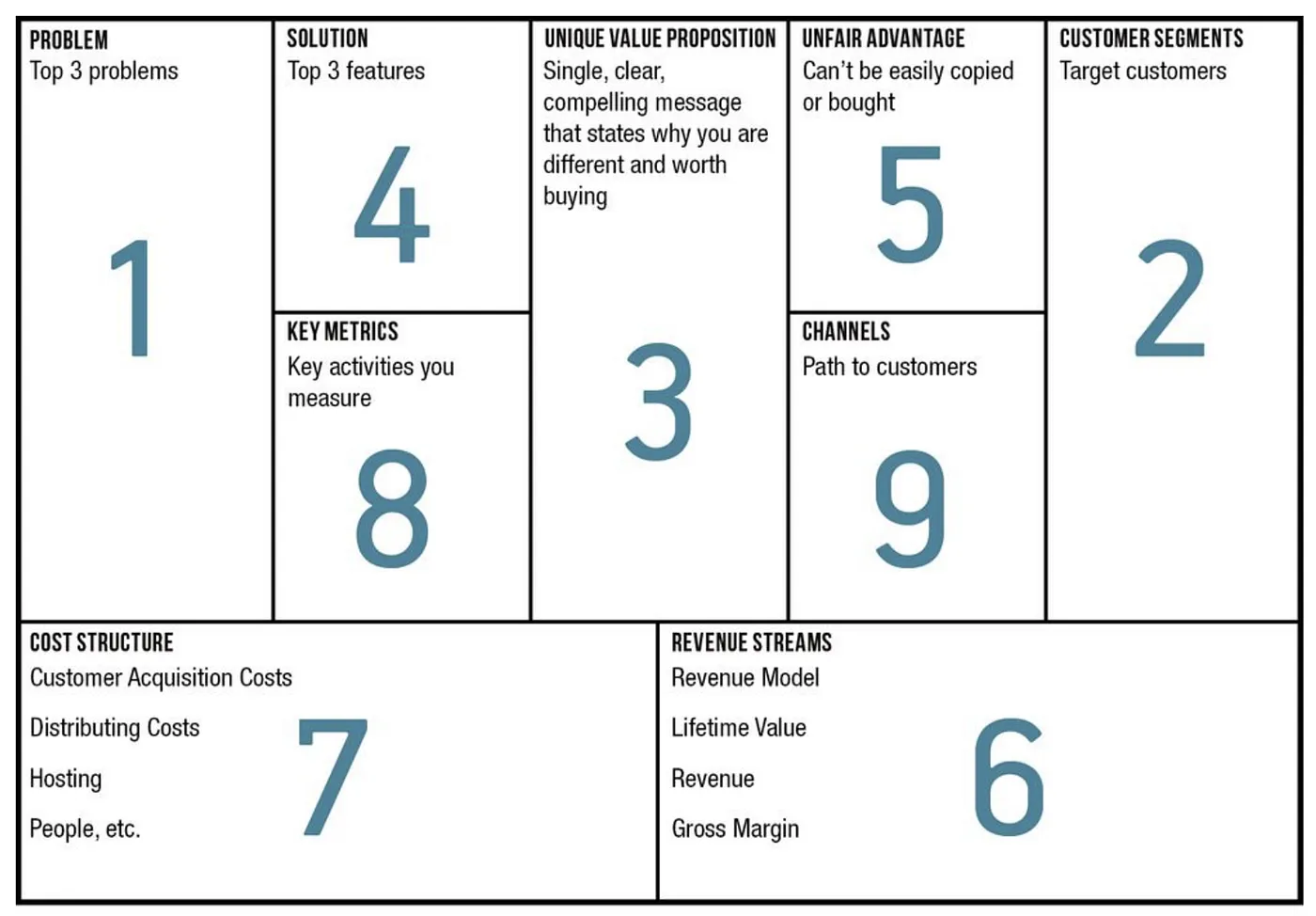Everyone nowadays seems to want to create their own startup, raise one billion of VC money, and buy a cyber track with that. That is all good and understandable. But many people seem to struggle with defining their idea into something tangible, something that is real or at least real enough that you can explain it to others and they don’t think you are a madman.
There is an easy way to do this, read on.

Fortunately, there is a framework to do just that. It was invented in Ancient Greece by Plato and his followers and then applied to the industry of startups. Or maybe not, I don’t know, but that doesn’t matter, what matters — it is an effective and commonly used technique.
Here is the overall structure:

Let’s look at how it works and why.
In the beginning, there was a problem.
Obviously, at first, you need a problem to solve. A lot of people immediately start to think about a solution but that is a mistake. You first need to define a problem. It better be a real one but at this stage, it will be hard to tell if it is real so let’s take anything that looks reasonable. For example:
Aren’t you tired of losing socks when doing laundry? How annoying it is to find just one of a pair and another going rogue? Someone has to put a stop to this unacceptable situation.
What if I told you that now you can match your single sock to a pair with just a couple of clicks?
Let me introduce you to Socker — a service that guarantees you’ll never lose a sock again by offering a subscription for matching socks to replace lost ones.
Amazing, we have a startup idea. Now let’s break it down:
1. Problem
- People frequently lose socks, ending up with mismatched pairs.
- Matching socks is very time-consuming and frustrating.
- Buying new pairs to replace lost socks adds to the cost and waste.
Now we need to understand who is the customer! Remember, problems do not exist in a vacuum, somebody has to struggle with the problem. It could be people or businesses (although in the end, it is always people). Let’s define who are they:
2. Customer Segments
- Busy professionals who value convenience.
- Families with children who constantly lose socks.
- College students and young adults living independently for the first time.
- Environmentally conscious consumers looking to reduce waste.
Now, you have people struggling with the problem, now we need to define how our product creates value for them in a unique way, that is in a way that doesn’t yet exist (otherwise why are you working on it?):
3. Unique Value Proposition
- “Never lose a sock again! Our service guarantees matching socks, delivered right to your door.”
- Eco-friendly approach by reducing waste and promoting sustainability.
- Time-saving and hassle-free solution for managing socks.
And, at last, we come to the solution. How exactly are you going to solve it:
4. Solution
- Subscription service delivering matching socks on a regular basis.
- Personalized sock matching kits with unique codes to easily reorder specific pairs.
- Optional eco-friendly laundry bags to help keep socks together during washes.
Great, we are half done. Once you define how you are going to solve the problem you need to think about how are you going to distribute the product, that is — which channels are you going to use.
5. Channels
- Online platform (website and mobile app).
- Social media marketing.
- Partnerships with laundry services and eco-friendly product stores.
- Influencer endorsements and referrals.
And how are you going to make money doing that? I know it was kind of anathema a couple of years ago to think about that and only growth mattered but things changed and now you better make some. So what is your business model?
6. Revenue Streams
- Monthly or yearly subscription fees.
- One-time purchases for personalized matching kits and eco-friendly laundry bags.
- Premium options for higher-quality or themed socks.
Making money is great but only if you spend less money than you make doing so. It used to be popular to sell a dollar for 90 cents in the past in inflate growth, nowadays it still happens but is sort of frowned upon. So you need to think about what will be your expenses:
7. Cost Structure
- Production and shipping of socks.
- Website and app development and maintenance.
- Marketing and customer acquisition costs.
- Partnerships and collaborations.
At the end of the day, you may define your success in different terms than just mere money. It is ok, as long as you define them clearly. Now it is time to do that:
8. Key Metrics
- Customer acquisition cost (CAC).
- Monthly recurring revenue (MRR).
- Customer retention rate.
- Number of socks delivered/replaced.
- Customer satisfaction and feedback.
9. Unfair Advantage
This is one of the most important steps and every investor will ask you about it. What is your moat? What makes you special that no one else can solve this problem this way? What is it that you have that is so unfair that you will the competition with other companies no matter what? It could be your insider knowledge of certain industries and verticals, R&D and/or patents, innovative technology that nobody has, established partnerships with incumbents in the industry, and so on. In our case:
- Proprietary matching technology with unique codes for easy reordering.
- Strong brand identity focused on sustainability and convenience.
- Established partnerships with eco-friendly brands and laundry services.
As you can see — it is not a difficult process but a very important one. In the end, you will have a much clearer understanding of your idea and how to bring it to reality. Using this it is easy to create a pitch deck for investors and future hires.
That is all for now, have fun.



